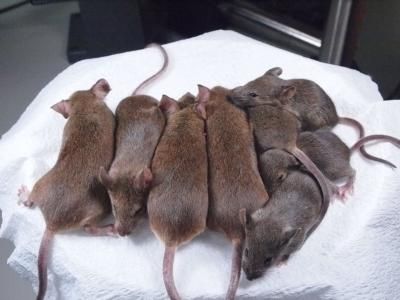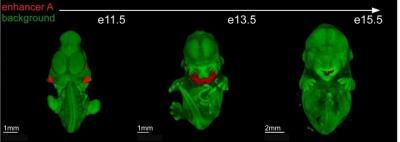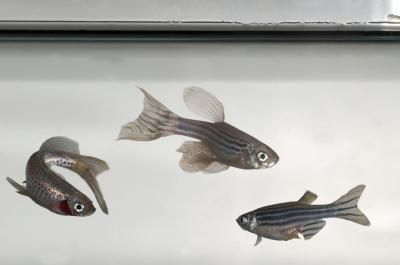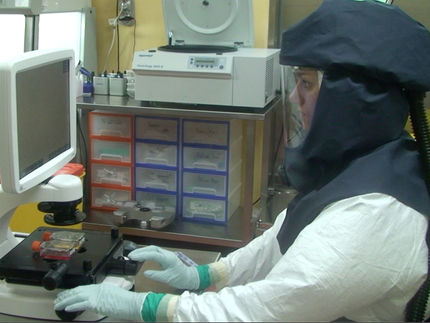Japanese researchers succeed in making generations of mouse clones
Using the technique that created Dolly the sheep, researchers from the RIKEN Center for Developmental Biology in Kobe, Japan have identified a way to produce healthy mouse clones that live a normal lifespan and can be sequentially cloned indefinitely.

These are mouse clones from the 24th and 25th generations.
RIKEN
In an experiment that started in 2005, the team led by Dr. Teruhiko Wakayama has used a technique called somatic cell nuclear transfer (SNCT) to produce 581 clones of one original 'donor' mouse, through 25 consecutive rounds of cloning.
SNCT is a widely used cloning technique whereby a cell nucleus containing the genetic information of the individual to be cloned is inserted into a living egg that has had its own nucleus removed. It has been used successfully in laboratory animals as well as farm animals.
However, until now, scientists hadn't been able to overcome the limitations of SNCT that resulted in low success rates and restricted the number of times mammals could be recloned. Attempts at recloning cats, pigs and mice more than two to six times had failed.
"One possible explanation for this limit on the number of recloning attempts is an accumulation of genetic or epigenetic abnormalities over successive generations" explains Dr. Wakayama.
To prevent possible epigenetic changes, or modifications to DNA function that do not involve a change in the DNA itself, Wakayama and his team added trichostatin, a histone deacetylase inhibitor, to the cell culture medium. Using this technique, they increased cloning efficiency by up to 6-fold.
By improving each step of the SCNT procedure, they were able to clone the mice repeatedly 25 times without seeing a reduction in the success rate. The 581 healthy mice obtained in this way were all fertile, they gave birth to healthy pups and lived a normal lifespan of about two years, similar to normally conceived mice.
"Our results show that there were no accumulations of epigenetic or genetic abnormalities in the mice, even after repeated cloning," conclude the authors.
Dr. Wakayama adds, "This technique could be very useful for the large-scale production of superior-quality animals, for farming or conservation purposes."
Dr. Wakayama's work made the news in 2008 when his team created clones from the bodies of mice that had been frozen for 16 years, using SNCT.
Original publication
Most read news
Original publication
Sayaka Wakayama, Takashi Kohda, Haruko Obokata, Mikiko Tokoro, Chong Li, Yukari Terashita, Eiji Mizutani, Van Thuan Nguyen, Satoshi Kishigami, Fumitoshi Ishino and Teruhiko Wakayama "Successful serial cloning in the mouse over multiple generations." Cell Stem Cell, 2013
Organizations
Other news from the department science

Get the life science industry in your inbox
By submitting this form you agree that LUMITOS AG will send you the newsletter(s) selected above by email. Your data will not be passed on to third parties. Your data will be stored and processed in accordance with our data protection regulations. LUMITOS may contact you by email for the purpose of advertising or market and opinion surveys. You can revoke your consent at any time without giving reasons to LUMITOS AG, Ernst-Augustin-Str. 2, 12489 Berlin, Germany or by e-mail at revoke@lumitos.com with effect for the future. In addition, each email contains a link to unsubscribe from the corresponding newsletter.
Most read news
More news from our other portals
Last viewed contents
Ataxia
5 Leading Multinationals Announce R&D Projects for Ireland - Bristol-Myers Squibb Company, Pfizer Inc., Genzyme Corporation, Xilinx Inc. Citigroup are investing a total of EUR 53.25 million

Can cell ageing be stopped? - Tiny switches in the cell systems can positively influence ageing
2,5-Dimethylfuran
Histidine-tryptophan-ketoglutarate

Experimental insecticide explodes mosquitoes, not honeybees
VAI researchers find long awaited key to creating drought resistant crops - Findings could help engineer hardier plants and have implications for stress disorders in humans

Trends in analysis

Uhlmann Pac-Systeme honored with TOP 100 Award - Manufacturer of pharmaceutical packaging machines wins innovation competition
Nutrigenomics























































